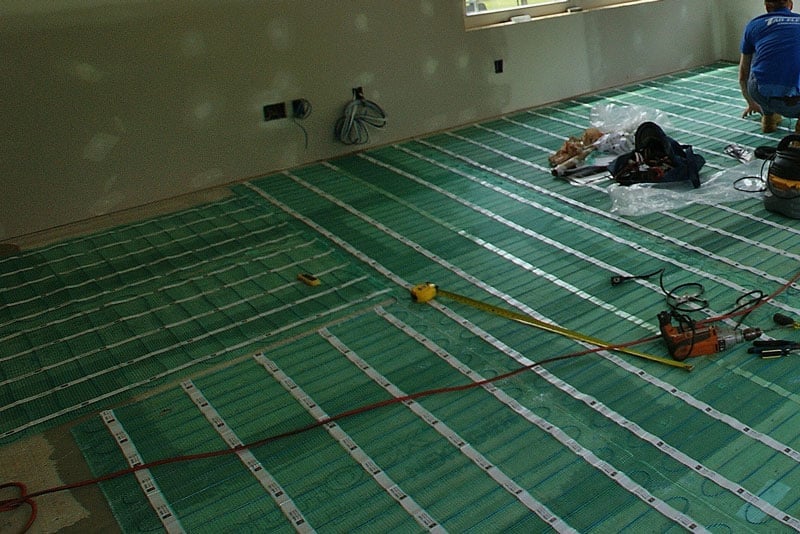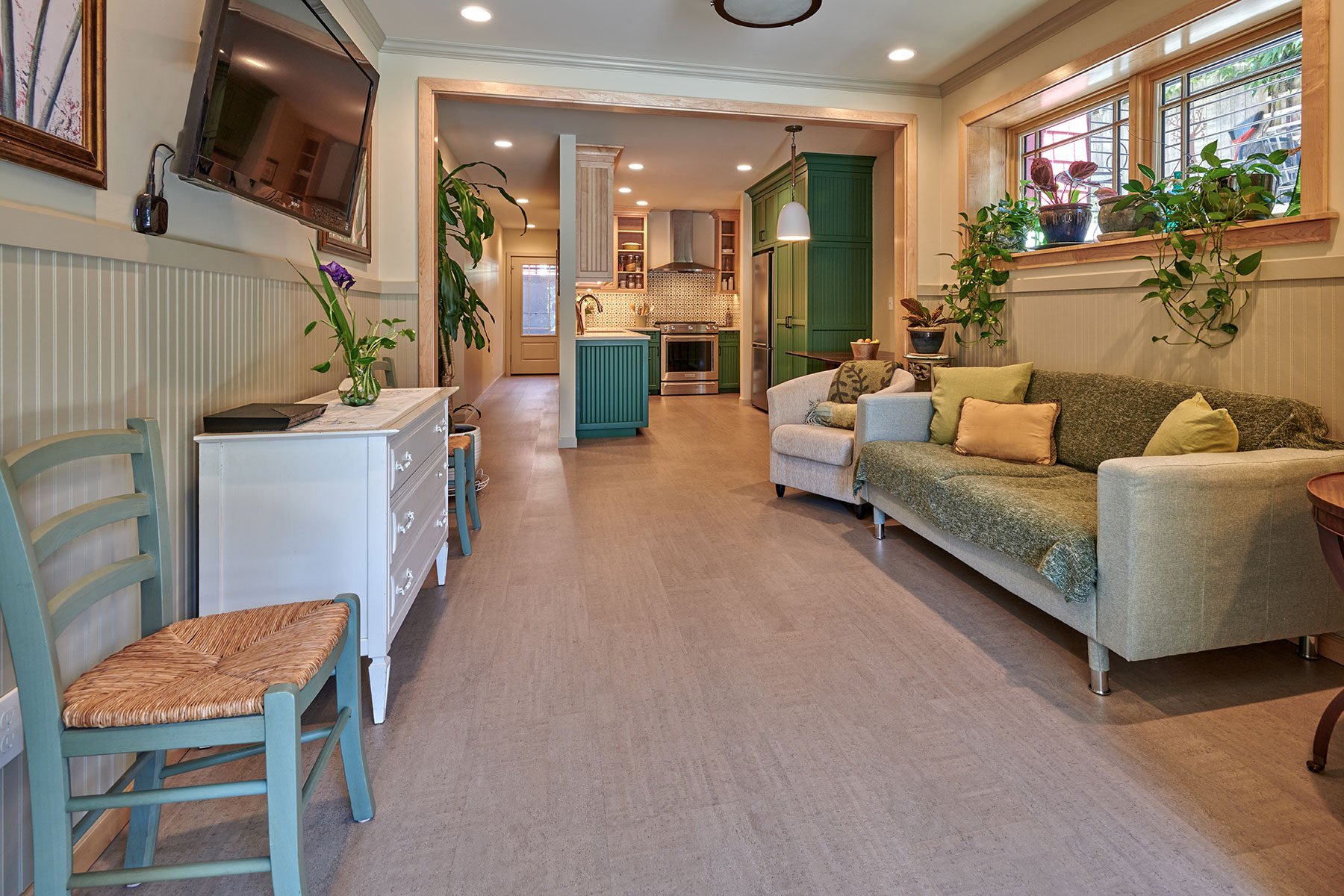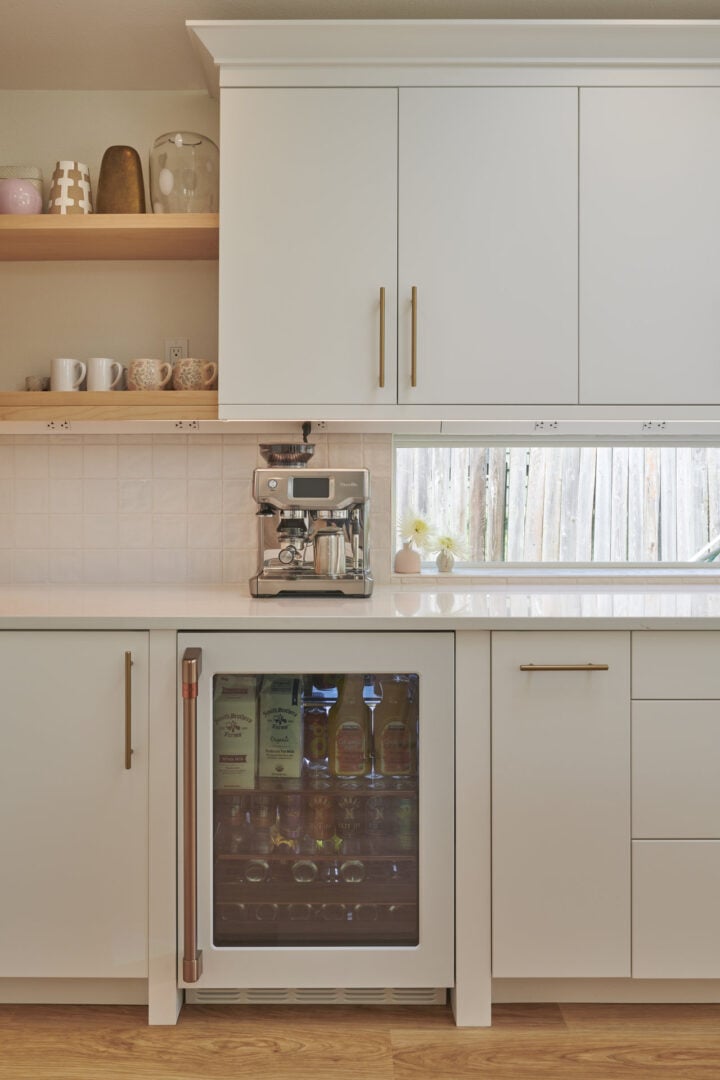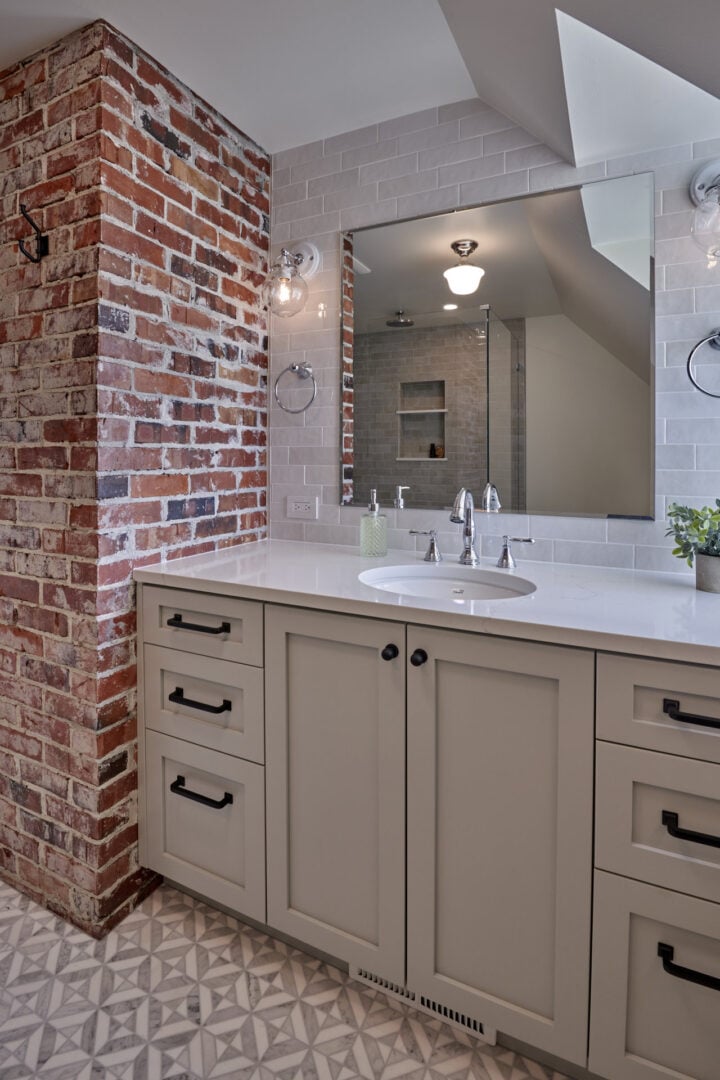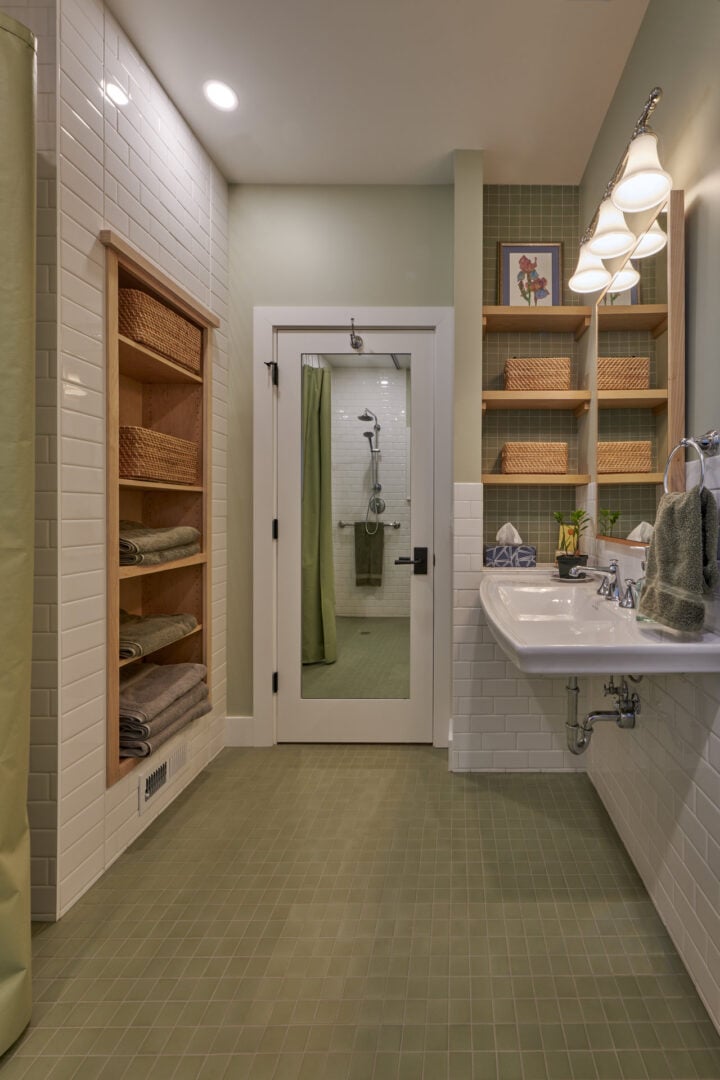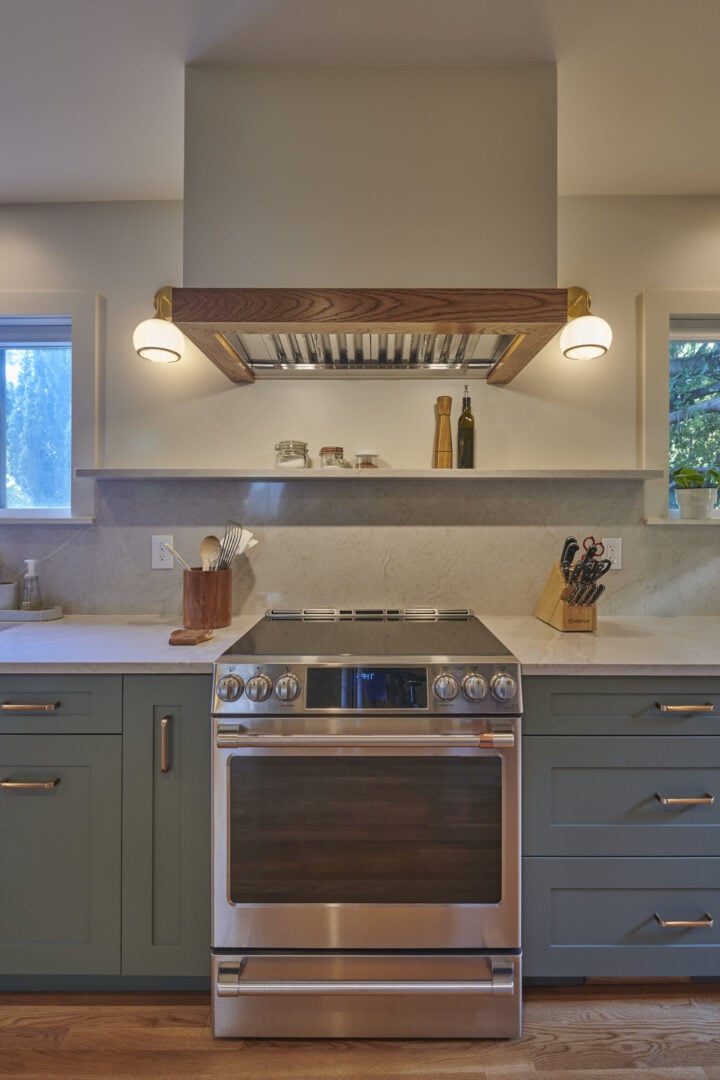The basement is often one of the most overlooked parts of the house. We put in a lot of effort in getting the living room just right, putting every piece in place for the kitchen, and finding the perfect finishes for the master bedroom.
The basement often remains unfinished and is used for storage. All the same, your basement doesn’t have to be a dingy spider-filled hideout. In fact, your basement can be one of the coziest parts of your house. And the cost to finish a basement is often far less than adding square-footage above ground.
However, basements can be tricky to make comfortable because, among other challenges, the floor usually is too cold in the winter. That’s because few basement slabs are sufficiently insulated, and the ground under your home robs your basement of heat, making the floor feel cold on your toes.
It’s a challenge to set up an effective heating solution for your basement floor if you just use traditional ducted heating methods. Thus, radiant flooring is fast becoming the premium basement heating solution.
Below are some of the main reasons to heat a basement floor.
1. Reduced Electricity Costs
Utility bills are steadily going up. It’s becoming increasingly important to thoroughly review your home’s energy usage and reduce it wherever possible. Doing so benefits the environment and your family’s budget.
Traditional heating systems, such as radiators or forced air, require heating up to 84 degrees to be effective, which can lead to higher energy costs. Heated basement floors, on the other hand, are effective at a lower temperature of around 75 degrees.
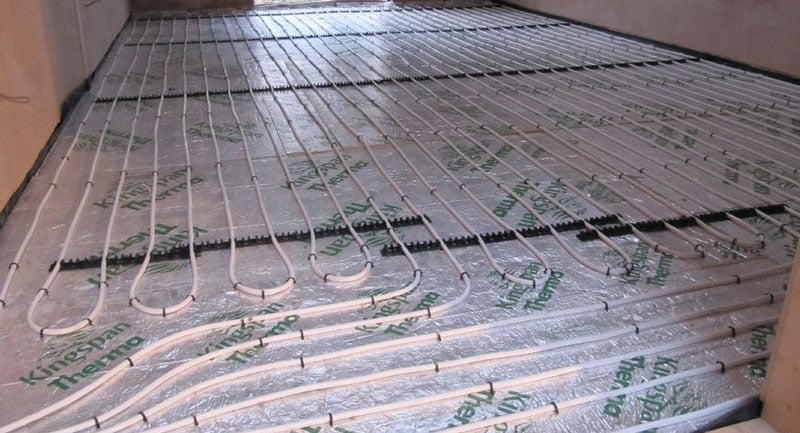 Source: geograph.org.uk
Source: geograph.org.uk
Radiant heating systems are less affected by the air leaks that are all-too-common in basements, concentrating more of the heating energy where it counts: on warming your toes!
2. More Even Heating
Radiant heating evenly spreads the warmth across the room. The temperature in the room is more even and constant, and you never have to sit near a heat duct just to warm up.
Conventional forced-air heat will warm your basement up quickly, usually in an hour or less, but then the temperature will quickly drop when the furnace turns off. After a short time, the furnace kicks back on (using more energy). This cycle continues all day long: hot-warm-cold, hot-warm-cold.
On the other hand, radiant heat will take most of the day to get to temperature but will stay steady from that point on and require less energy to do so. No hot-warm-cold cycle.
How do heated basement floors work?
Radiant floors use electricity or hot water to deliver the heat. Electric floors use cables that are embedded in thin mats.
Electrically heated radiant floors
The mats can be installed as a subfloor under most floor types, such as tile, engineered wood, laminate, or concrete. They are connected to a thermostat or a timer. The mats heat up, warming the floor slab and finished flooring.
Since the heating cables are evenly spread across the floor slab, the heat produced uniformly spreads across the house, giving you that comfortable warm feeling, even on the coldest mornings.
Hot-water heated radiant floors
Also called hydronic-heated floors, hot-water heated floors are similar to electric ones, only they are fitted with PEX (cross-linked polyethylene) tubing that circulates hot water under the floor. This ensures that energy efficiency is achieved while uniformly spreading the warm water’s radiant heat across the room and not just at the heat source.
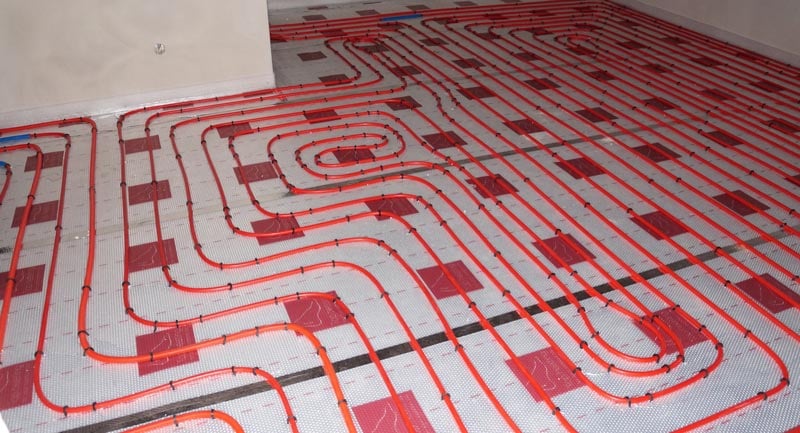 Source: commons.wikimedia.org
Source: commons.wikimedia.org
3. Minimal Maintenance Costs
Though a radiant-heated floor has a higher installation cost than standard heaters, its maintenance and operating costs are lower. The tubing that is laid beneath the concrete slab is usually firmly fixed and is basically maintenance-free.
Standard heaters, on the other hand, require regular maintenance.
With heated concrete floors, you can expect a lifespan of 30 to 45 years with minimal maintenance.
Once the initial installation is done, all you need is to switch on your thermostat to move from that cold basement to a warm livable space.
4. Increased Availability of Room Space
The basement can be one of the most crowded spaces in your house, with pipes and electrical wiring hanging from the ceiling and your bulky set of tools stored there.
Converting your basement into a livable space can be quite a task. Consequently, you will probably want to save space wherever possible.
A standard forced-air furnace or boiler system has a large footprint. On the other hand, an electric floor heating system is placed as a subfloor and does not require any bulky mechanicals.
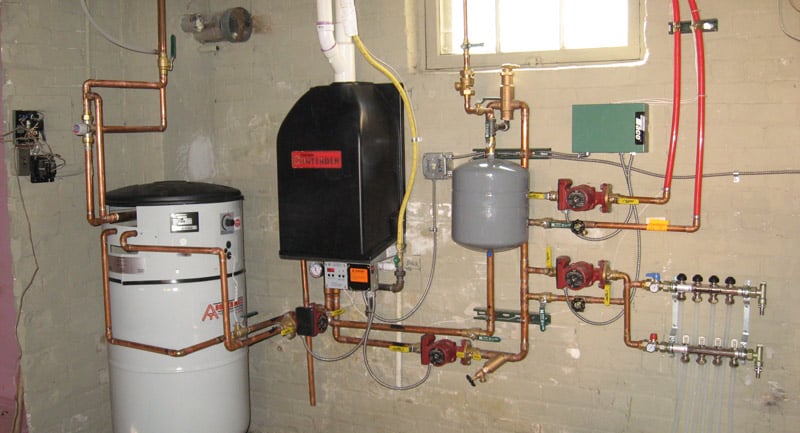 Source: commons.wikimedia.org
Source: commons.wikimedia.org
A hot-water radiant system is also beneath the floor and can be heated by a small wall-mounted on-demand water heater that can be hidden in a closet. This lets you freely plan your basement space without having to worry about blocking your heat sources or adding more bulky heat ducts.
5. Compatibility with Different Flooring
A great feature of radiant heating is that it is compatible with most types of finished flooring.
What kind of basement flooring is compatible with subfloor heating?
- Carpet
- Concrete slab
- Tiles
- Laminate
- Wood flooring
6. Relatively Easy to Install
You may have a tight budget and be considering a reliable heating system for your basement concrete slab. Heating systems for floors, though relatively expensive to install, have an advantage in their ease of installation.
In fact, if you’re a seasoned do-it-yourself guru, you can take up the challenge and save money.
Unless you are replacing your basement concrete slab, you will need to opt for the electric mat style of radiant heating rather than the hydronic style.
7. Quiet
With radiant floor heating systems installed, you no longer need to put up with the noise coming from your traditional HVAC system. Radiant systems are silent.
8. Better Air Quality
Conventional forced-air systems can do a good job drying out your damp basement and reducing mildew and mold spores. However, forced-air heat also stirs up dust and other airborne irritants. And if you don’t keep your ducts clean, you can introduce dust mites and other nasties into your living environment.
Hydronic systems and electric systems on the other hand ensure even heat distribution across the room without creating drafts and stirring up dust.
With a basement heated with radiant heat, the air quality is noticeably better.
Featured Image: Flickr by David Cedrone
